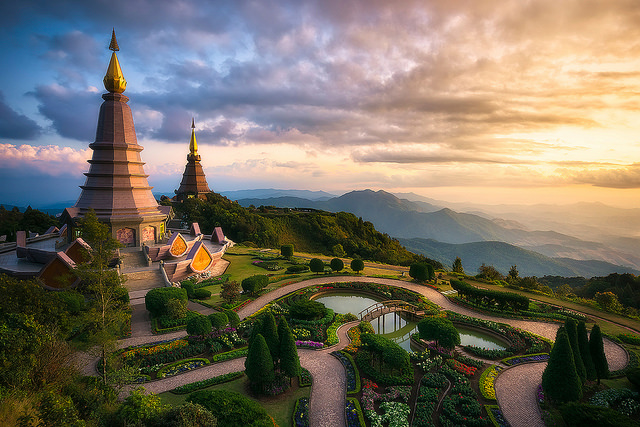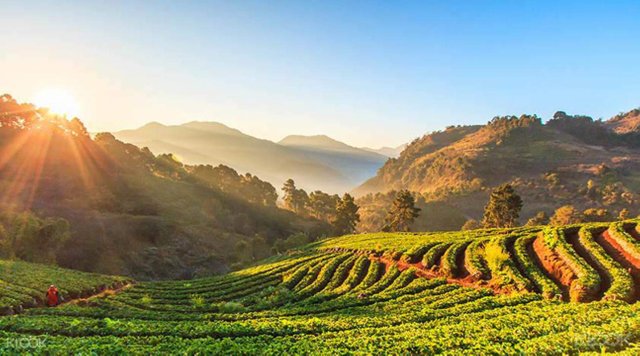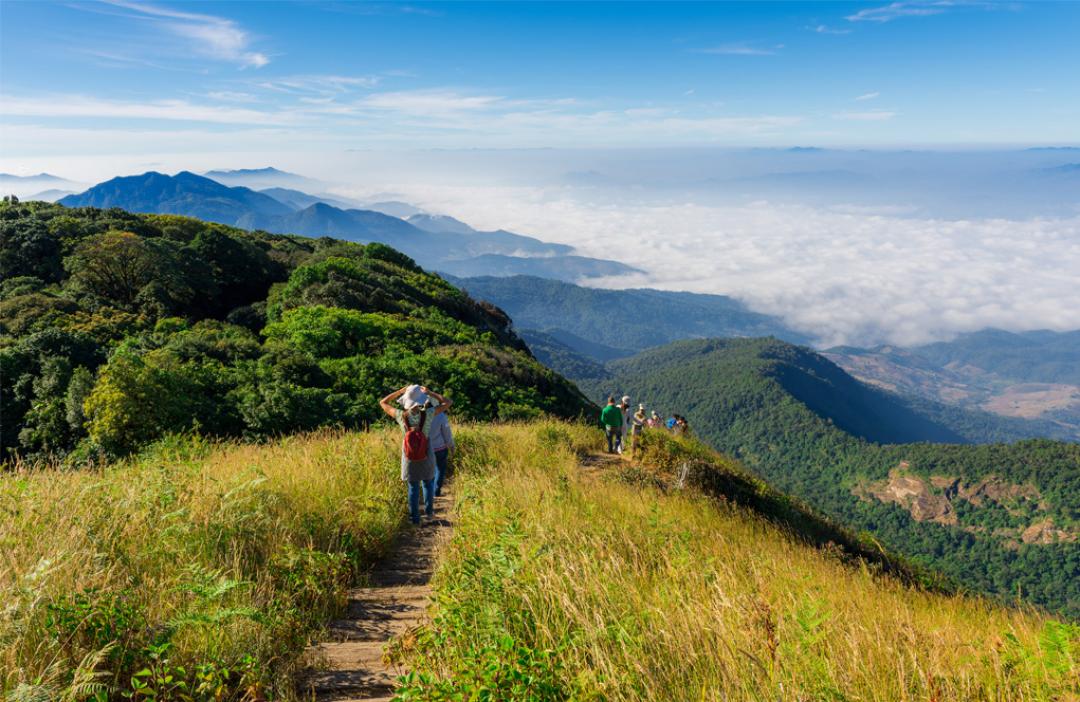DOI INTHANON , CHAIMAI , Thailand 🇹🇭
- Doi Inthanon (Thai: ดอยอินทนนท์, pronounced [dɔ̄ːj ʔīn.tʰā.nōn]) is the highest mountain in Thailand.[1] It is in Chom Thong District, Chiang Mai Province. This mountain is an ultra prominent peak, known in the past as Doi Luang ('big mountain') or Doi Ang Ka, meaning the 'crow's pond top'. Near the mountain's base was a pond where many crows gathered. The name Doi Inthanon was given in honour of King Inthawichayanon, one of the last kings of Chiang Mai, who was concerned about the forests in the north and tried to preserve them. He ordered that after his death his remains be interred at Doi Luang, which was then renamed in his honour.

Today, the summit of Doi Inthanon is a popular tourist destination for both foreign and Thai tourists, with a peak of 12,000 visitors visiting the summit on New Year's Day. In addition to a range of tourist facilities on the summit, there is also a Royal Thai Air Force weather radar station at the summit and the Thai National Observatory (TNO) at km44.
Doi Inthanon is the highest peak of the Inthanon Range (Thai: ทิวเขาอินทนนท์) of the Thanon Thong Chai Range, a subrange of the Shan Hills in the Thai highlands stretching southwards from the Daen Lao Range. This range, the southwesternmost of the Shan Highland system, separates the Salween watershed from the Mekong watershed. Other high peaks of the Loi Lar Mountain Range are Doi Luang Chiang Dao (2,175 m), Doi Pui (1,685 m), and Doi Suthep (1,601 m).

In 1954, the forests around Doi Inthanon were conserved, creating Doi Inthanon National Park, as one of the original 14 national parks of Thailand.[3] This park now covers 482.4 km² and spreads from the lowlands at 800 m elevation up to the peak at 2,565 m. Given the varied climatic and ecological areas regions, the park supports a range of animal species, including over 360 bird species.
On the lower slopes of Doi Inthanon, near the Karen hill tribe village, Ban Sop Had, are the Wachirathan waterfalls (Thai: น้ำตกวชิรธาร), where the Wachirathan (lit. "Diamond Creek") tumbles over a granite escarpment.18.541790°N 98.599247°E
The climate is typically tropical and fairly cool on the summit of Doi Inthanon. In winter the average temperature is 6 °C (43 °F) in January and temperatures can sometimes drop below 0 °C (32 °F). On 21 December 2017, an all-time low temperature of minus-5 °C was recorded at 06:30 at km44.4.[4] From March to June, temperatures are pleasant especially at higher altitudes. The rainy season runs from April to November, when it sometimes rains more than two hours per day.
Geologically the mountain is a granite batholith in a north-south oriented mountain range. The second-highest peak of this range is Doi Hua Mot Luang at 2,340 m.
On the main road to the summit of Doi Inthanon stand two adjacent chedis, one called Naphamethinidon (นภเมทินีดล), meaning 'by the strength of the land and air', and the other, Naphaphonphumisiri (นภพลภูมิสิริ), meaning 'being the strength of the air and the grace of the land'. These temples were built to honour the 60th birthday anniversary of King Bhumibol Adulyadej in 1987, and the 60th birthday anniversary of Queen Sirikit in 1992, respectively.
Kio Mae Pan Nature Trail.
The Inthanon Royal Project Research Station: The agricultural station was a King Bhumibol Adulyadej project to help eliminate opium cultivation. It contains a rhododendron garden, and greenhouses for growing ferns, flowering plants, and vegetables.

interesting, very interesting!
Get Daily Reward By Uploading Your Photography on
Congratulations @rulesofsurvival! You received a personal award!
Click here to view your Board of Honor
Congratulations @rulesofsurvival! You received a personal award!
You can view your badges on your Steem Board and compare to others on the Steem Ranking
Vote for @Steemitboard as a witness to get one more award and increased upvotes!